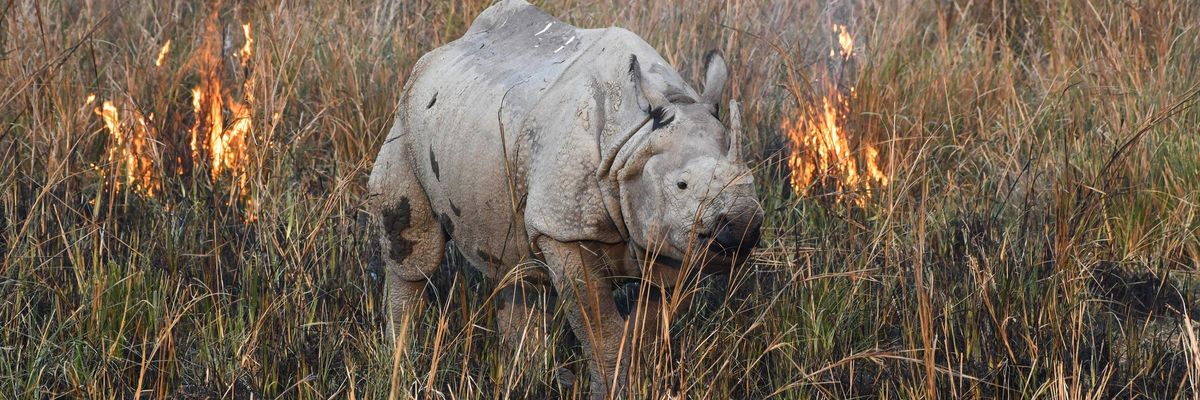In 1970, humans numbered 3.7 billion. Today, we're more than double that--eight billion! During that short time, the number of animals that also share this planet dropped by 69 per cent!
As the WWF report states, "The evidence is unequivocal--we are living through the dual crises of biodiversity loss and climate change driven by the unsustainable use of our planet's resources."
This catastrophic decline is outlined in the World Wildlife Fund's "2022 Living Planet Report," which examines the state of Earth' biological diversity based on mammal, bird, fish, reptile and amphibian population trends.
As environmentalist and author Bill McKibben writes on his site, "Over those five decades most of the decline can be traced to habitat destruction: the human desire for ever more stuff playing out daily, acre by acre, across the globe." Human-caused climate disruption will soon become the main driver, the WWF report notes.
The UN Convention on Biological Diversity adopted the WWF's Living Planet Index as "an indicator of progress towards its 2011-2020 targets" and for its "important role in monitoring progress towards the post-2020 goals and targets negotiated at COP15 this December." That's critical, because we still have time--although increasingly less--to turn things around.
The December UN Biodiversity Conference (COP15) in Montreal offers an opportunity to improve and approve a new Global Biodiversity Framework, a plan to protect and restore nature in the coming decade. But, in light of COP15 and the UN climate summit (COP27) in Egypt in November, we must recognize that climate and biodiversity are connected.
As the WWF report states, "The evidence is unequivocal--we are living through the dual crises of biodiversity loss and climate change driven by the unsustainable use of our planet's resources. Scientists are clear, unless we stop treating these emergencies as two separate issues neither problem will be addressed effectively."
Stabilizing and reversing the alarming trend will require "more conservation efforts, more sustainable production and more sustainable consumption," the report says, adding, "None of these actions alone are enough. Only when all three actions are taken together will we see the reversal of nature loss at the speed we need."
WWF shows how laws can be effective in reversing damage. It notes the UN recognized in 2021 that "everyone, everywhere has the right to live in a clean, healthy and sustainable environment," and countries that were ahead of the curve are already reaping benefits: "Costa Rica added the right to a healthy environment to its constitution in 1994. Renewables now deliver 99% of its electricity; laws ban open pit mining and oil and gas development; and carbon taxes pay Indigenous Peoples and farmers to restore forests, which have since doubled in size." (Canada still doesn't recognize the right to a healthy environment in law.)
The December UN Biodiversity Conference (COP15) in Montreal offers an opportunity to improve and approve a new Global Biodiversity Framework.
The report outlines many solutions and successful examples of reversing nature loss, from removing dams to employing nature-based infrastructure. (In his article, McKibben points to a study that found "when a couple of small and no-longer-useful dams were torn down on some New England streams, herring populations quickly rebounded from a few thousand to a few million, which doubtless did wonders for whoever eats herring too.")
Not everyone is affected equally by the twin crises. "Climate change and biodiversity loss are not only environmental issues, but economic, development, security, social, moral and ethical issues too," the WWF study says, noting that although industrialized countries are most responsible for environmental damage worldwide, developing nations are disproportionately affected by biodiversity loss. Compare the 20 per cent biodiversity decline in North America to the 94 per cent decline in Latin America and the Caribbean.
Many people have become so disconnected from nature that they find it difficult to see how losing some animals will affect them. But everything is interconnected. When ecosystems lose components, they can change drastically, even collapse. As we destroy more and more habitat, we come into closer, more frequent contact with microorganisms that can lead to pandemics. When other life starts to disappear--whether it's plants, fungi, invertebrates or vertebrates--everything we need to survive is affected, from the food web to natural systems.
Environmental organizations worldwide, including WWF, are calling on COP15 negotiators to make halting and reversing nature loss by 2030 and achieving full recovery by 2050 to be the 10-year Global Biodiversity Framework's overarching mission, and to "embrace clear, science-based targets and hold governments accountable to their commitments."
Let's all do our part.
